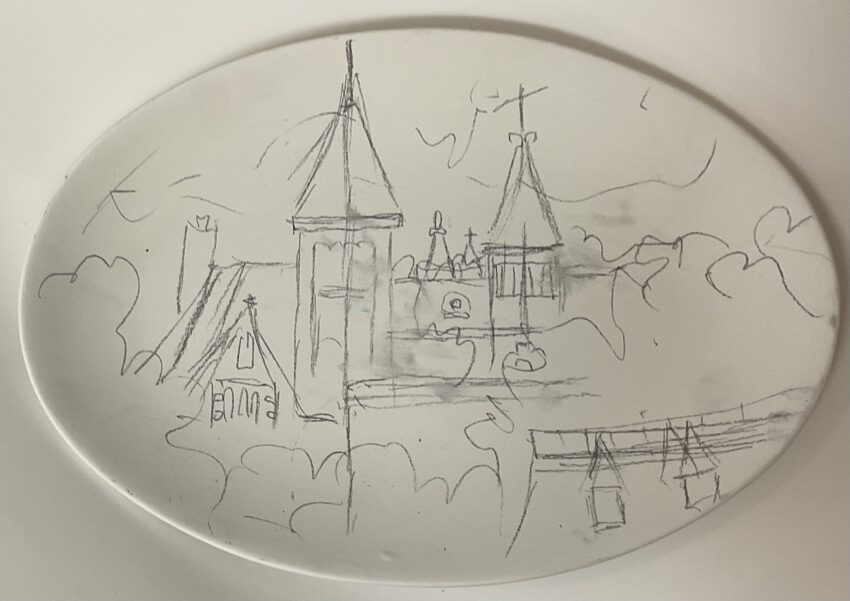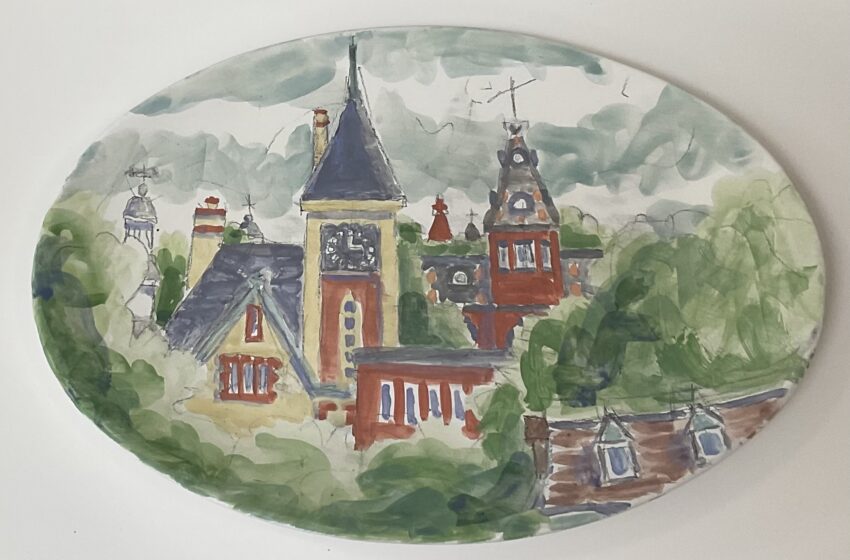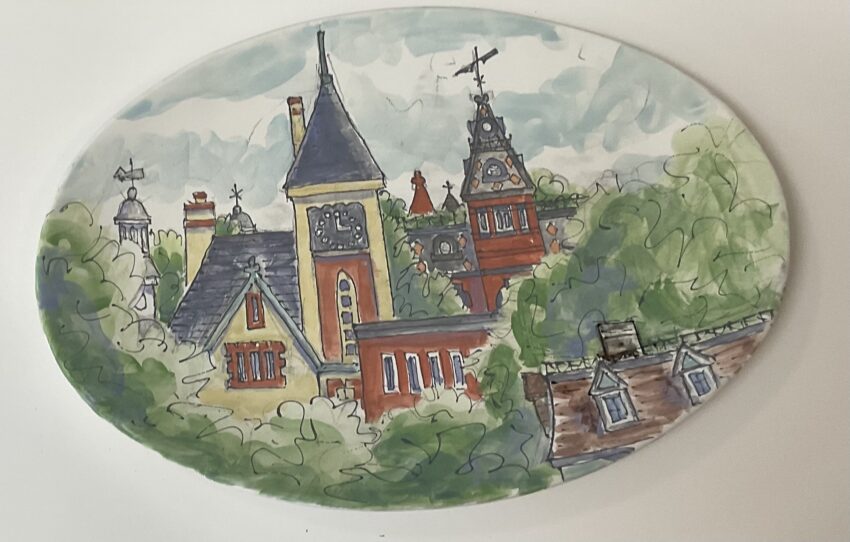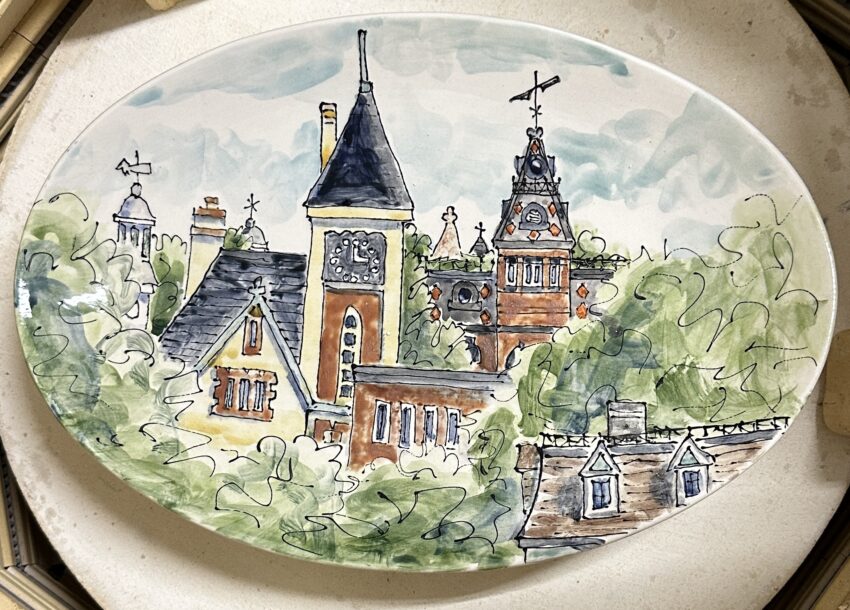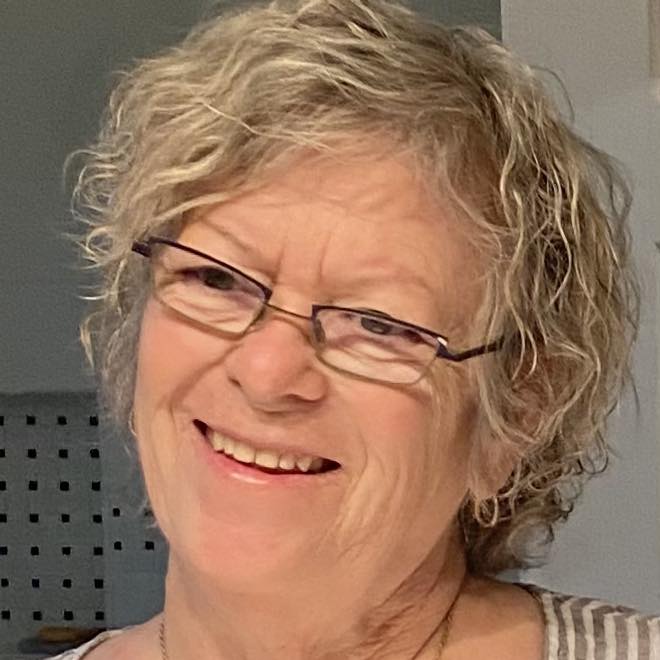I’m often asked to teach classes, either in watercolor or what I do on my pottery. My answer is always, I’m not a teacher; I don’t have the gift. When I looked up the definition – showing how to perform a specific task. Well, yes, but to me a teacher is more than that. The first part I can do, but to me the second part not mentioned – how to inspire – is the part I don’t know how to do.
That being said, this is how I do it. I work mostly on low fire white earthenware. Most of the underglazes I use can be fired higher, you just have to test them to see how stable they are at the higher temperature. I bisque at 04, glaze fire at 05.
As far as the particular colors, I am always looking for the next best, but some are staples. I use a variety of brands, depending on the color. Some are thinner, which is what I like. Spectrum, Stroke and Coat, Amaco LUG are favorite brands.
I use my underglazes like watercolors, in a transparent way. I’ve used line in some of my work since the beginning, 50 years ago (how can that be?).
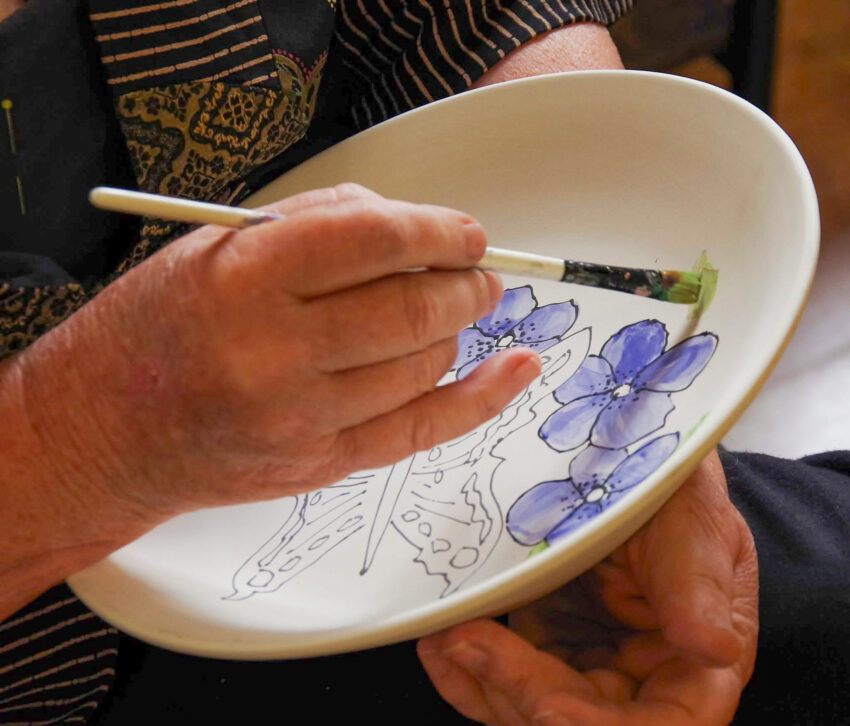
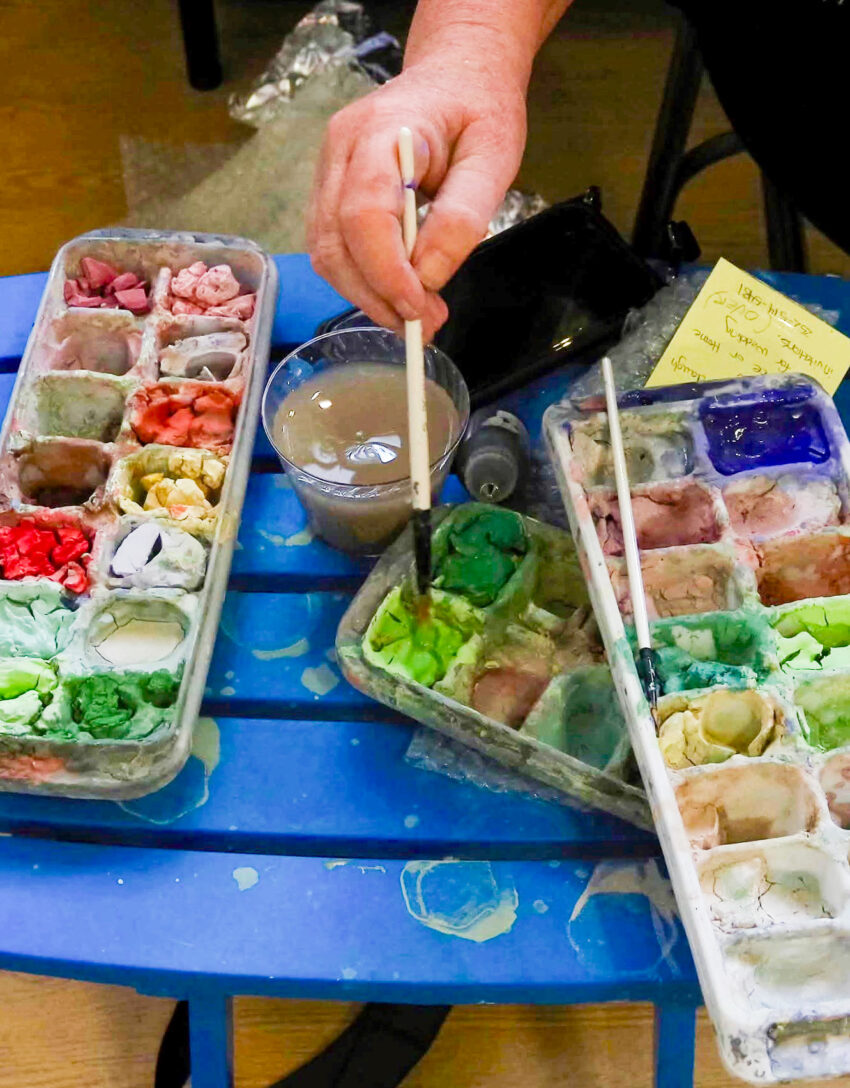
I usually sketch out the main part of the image, how much detail I use in that pencil sketch depends on how realistic that item is. Or if I’m writing and the passage is long, I want to be sure it’s going to fit, do I write bigger or smaller? My favorite pencil is Blackwing. The pencil is made of graphite and contains no wax so it doesn’t cause my glaze line to skip. My second favorite is a Bic mechanical pencil.
Going back to the glazes. I don’t like using the underglazes straight out of the jar. They seem slippery to me plus you use a LOT more. Instead, I put my underglazes into ice cube trays and allow them to dry out, then I reconstitute them. BTW, I do the same thing with my watercolors for the same reason.
Sketch the image. Fill in with a color. In the case of a tree, leaf green first, grass green for the shade. Outline with glaze pen. Cover with clear glaze and fire. Done!
